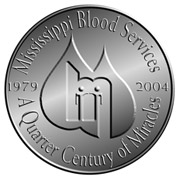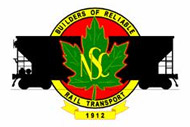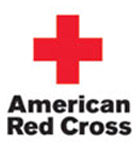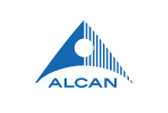Clients
 "...we have improved our key measure of productivity more than 35%, reduced manufacturing cycle time by 45%, decreased our inventory by 30%, and have greatly enhanced our ability to deliver our product on time and complete. Yet, the single most important benefit DEW has derived from this initiative has been the ability of ProGuide staff to inspire our people. ProGuide has encouraged DEW employees to change positively and completely the culture of our company."
"...we have improved our key measure of productivity more than 35%, reduced manufacturing cycle time by 45%, decreased our inventory by 30%, and have greatly enhanced our ability to deliver our product on time and complete. Yet, the single most important benefit DEW has derived from this initiative has been the ability of ProGuide staff to inspire our people. ProGuide has encouraged DEW employees to change positively and completely the culture of our company."
President & Chief Operating Officer, DEW Engineering & Development
 “ProGuide has assisted with the implementation, not just the development of the plan. Your team has developed processes that increase production, and decrease costs. The impact has been both immediate and dramatic.”
“ProGuide has assisted with the implementation, not just the development of the plan. Your team has developed processes that increase production, and decrease costs. The impact has been both immediate and dramatic.”
“The project results exceeded the goals established. In fact, with our current performance level, we will get a payback of more than 3 to 1 for each dollar invested in this process.”
Executive Vice President of Operations
 "ProGuide's approach is a very methodical one. They analyze your processes, your people, and your culture. After thorough examination of these areas, they begin to make recommendations on how you can improve.
"ProGuide's approach is a very methodical one. They analyze your processes, your people, and your culture. After thorough examination of these areas, they begin to make recommendations on how you can improve.
There are a number of tools that they use. One significant tool is the utilization of Performance Improvement Teams (PITs).These teams are made up of associates from all levels of the organization.
ProGuide works with these groups utilizing numerous statistical tools to help examine root causes of problems and inefficiencies. Not only do these teams resolve performance issues, but by their make-up, you get buy-in from all levels of the organization.
I am very pleased with the results that we have thus far achieved and know that we will continue to see those improvements over the coming months and years."
President & CEO
 “I did not picture the task of assessing and improving our complex, highly regulated Quality Assurance Program as an easy one for PMR. Yet, within a period of only three months, we were able to outline the weaknesses of our then-present system and develop ways to improve it. We then set out, as a team, to make these necessary improvements. Even now, after only a few months, we have witnessed marked changes in the plant's mentality toward quality issues. In fact, the promised savings continue to mount. Compared against the initial investment, the savings calculates to a nearly 4:1 ROI.”
“I did not picture the task of assessing and improving our complex, highly regulated Quality Assurance Program as an easy one for PMR. Yet, within a period of only three months, we were able to outline the weaknesses of our then-present system and develop ways to improve it. We then set out, as a team, to make these necessary improvements. Even now, after only a few months, we have witnessed marked changes in the plant's mentality toward quality issues. In fact, the promised savings continue to mount. Compared against the initial investment, the savings calculates to a nearly 4:1 ROI.”
Director, Quality Assurance & Inspection

“Our productivity substantially outperformed the Leith facility. Also, input from our supervisory and management corps was used to solve problems and each member of our management team received comprehensive training to help them make better decisions focusing on “how can I improve my department’s performance. We were especially pleased with the work in our distribution and warehousing areas, where a restructuring allowed for us to decrease staff significantly while increasing customer satisfaction and cutting our inventories.”
Managing Director
 "...thank your team for assisting us in strategically evaluating several potential new business streams. Your process was eye opening in several regards, but mostly I commend your objective approach to eliminating ideas that were often considered to be viable next steps for our company."
"...thank your team for assisting us in strategically evaluating several potential new business streams. Your process was eye opening in several regards, but mostly I commend your objective approach to eliminating ideas that were often considered to be viable next steps for our company."
President, Gambro-BCT
![]()
"Naturally, we at first were concerned that your group would put a great burden on our staff’s time. However, that fear was quickly laid to rest. We found that your staff was professional, courteous and considerate of our time. The quality and accuracy of the work, as well as the effort your group put into this study was exceptional. We were impressed with the understanding your team quickly came to in determining the deficiencies of our operation. The straightforward quantification methods used and shown during the presentation made it very easy and clear to visualize and, therefore, equally as easy to buy into your process."
Vice President, Textron Automotive Company - Evart Operations
 "We recently concluded our second PRIDE Project, this time in our QA, QC, Validation, Clinical Trials, and Regulatory Compliance Departments.
"We recently concluded our second PRIDE Project, this time in our QA, QC, Validation, Clinical Trials, and Regulatory Compliance Departments.
We surpassed our initial savings goal of achieving $1,500,000 and should reach $2,000,000 in due course. ProGuide identified areas where we had excess staffing, underutilized capacities, and inefficient processes.
Further, ProGuide streamlined the spans of control, restructured the departments, and relocated some structural elements into a more reasonable reporting relationship with our R&D and Operations units. Finally, we had no issues with the FDA."
Vice President of Finance
"...we hoped to leverage the launch of our next generation product with a goal of increasing our sales by approximately 15%. And with your help, we did so! Further, your efforts in the Service arena allowed us to build what we hope will be the industry leading service and support for a complicated new product."
EVP, Sales, Gen-Probe
 "MBC engaged ProGuide to assist us in improving our operational performance as we embarked on a dramatic growth plan for our organization. We have already seen a significant positive impact on our organization, ranging from the improved financial results to the "buy-in" of our staff for the continuous improvement process afforded by this project. I would recommend any potential client give serious consideration to the skills that ProGuide Management Resources can deliver."
"MBC engaged ProGuide to assist us in improving our operational performance as we embarked on a dramatic growth plan for our organization. We have already seen a significant positive impact on our organization, ranging from the improved financial results to the "buy-in" of our staff for the continuous improvement process afforded by this project. I would recommend any potential client give serious consideration to the skills that ProGuide Management Resources can deliver."
Chief Executive Officer, Memorial Blood Centers
 “Soon after our administrative merger, we were fortunate to utilize the services of PMR and its principals to help us maximize the strengths and minimize, if not eliminate, the weaknesses of our new entity. I began this working relationship with PMR with the requisite level of skepticism and hesitancy but soon became a devotee of their approach to consulting. The operational and organizational work done by PMR has imbued within my supervisory and front line staffs a sense of never being satisfied with current productivity and effectiveness. By giving them the skills to continually improve processes, staffs have loosened their grip on the past and consistently stretch towards the future.”
“Soon after our administrative merger, we were fortunate to utilize the services of PMR and its principals to help us maximize the strengths and minimize, if not eliminate, the weaknesses of our new entity. I began this working relationship with PMR with the requisite level of skepticism and hesitancy but soon became a devotee of their approach to consulting. The operational and organizational work done by PMR has imbued within my supervisory and front line staffs a sense of never being satisfied with current productivity and effectiveness. By giving them the skills to continually improve processes, staffs have loosened their grip on the past and consistently stretch towards the future.”
Chief Executive Officer
 “We engaged the PMR team to assist us in turning around the performance of our Welsh chocolate factory in Merthyr Tydfil. This was a comprehensive, wall-to-wall restructuring of our many departments. Our net result was a return on our investment approaching three pounds saved for each pound invested in this consulting effort: remarkable! The consultants aided us in achieving success by working with our management and personnel, not against them or in a vacuum. They jointly developed numerous strategies for correcting the many problems. And though a staff reduction was indeed recommended and redundancies taken, the bulk of the savings resulted from operational improvements, method changes, organization restructuring and improved communication. This was all brought about by a no-nonsense approach to teamwork and management development of the front-line supervisors.”
“We engaged the PMR team to assist us in turning around the performance of our Welsh chocolate factory in Merthyr Tydfil. This was a comprehensive, wall-to-wall restructuring of our many departments. Our net result was a return on our investment approaching three pounds saved for each pound invested in this consulting effort: remarkable! The consultants aided us in achieving success by working with our management and personnel, not against them or in a vacuum. They jointly developed numerous strategies for correcting the many problems. And though a staff reduction was indeed recommended and redundancies taken, the bulk of the savings resulted from operational improvements, method changes, organization restructuring and improved communication. This was all brought about by a no-nonsense approach to teamwork and management development of the front-line supervisors.”
Managing Director
 "Canadian Blood Services engaged ProGuide Management Resources in September 2002 to drive a "mission critical initiative" as part of our efforts to transform our organization.
"Canadian Blood Services engaged ProGuide Management Resources in September 2002 to drive a "mission critical initiative" as part of our efforts to transform our organization.
We are pleased to say that after 36 weeks of intensive on-site engagement, our joint efforts have produced outstanding results. Our key measure of productivity (Labor Hours per Unit) has decreased more than 20%, collections have increased almost 13%, and out operations savings/cost avoidance is averaging $100,000 per week!
All of this equates to a return on our investment of nearly 400%The best testament to our satisfaction is the fact that we have expanded the scope of our original project with you, having launched the "PRIDE" initiative into another one of our centers.
We are confident that, together, we will achieve the same outstanding results."
Chief Executive Officer
 "I am fully satisfied that you delivered what you promised when we started down this path more than seven months ago. We experienced a return on our investment of nearly 3:1 and expect to continue to enjoy the benefits of this engagement."
"I am fully satisfied that you delivered what you promised when we started down this path more than seven months ago. We experienced a return on our investment of nearly 3:1 and expect to continue to enjoy the benefits of this engagement."
Chief Executive Officer, Virginia Blood Services
 “Having just completed our three-year project with PMR, we would like to take this opportunity to thank you and your team for their fine work. In November 1990 we set out on a course with you to improve the Production Planning function at the Hannibal Rolling Mill.
“Having just completed our three-year project with PMR, we would like to take this opportunity to thank you and your team for their fine work. In November 1990 we set out on a course with you to improve the Production Planning function at the Hannibal Rolling Mill.
We had no idea then that we would retain you and your team for three years to tackle other diverse issues throughout the plant. Similarly, we never expected to achieve a turn-around of millions of dollars, moving the facility from $5MM loss in 1990 to a $17MM profit in 1993. We are grateful for your diligence and teamwork and, yes, even the camaraderie that you embedded within our management team. Though the process of change was painful at times, we always believed that we were working jointly toward common goals.”
Senior Vice President of Manufacturing & Plant Manager, Hannibal Rolling Mill
Chief Financial Officer, Hannibal Rolling Mill
 "We achieved a substantial financial improvement from this project, returning more than $8,000,000 on our $2,000,000 investment. This was accomplished by reducing energy costs, focusing on preventing accidents and injuries, balancing our trains to meet customer demand - by the day and the hour - and streamlining our staffing.
"We achieved a substantial financial improvement from this project, returning more than $8,000,000 on our $2,000,000 investment. This was accomplished by reducing energy costs, focusing on preventing accidents and injuries, balancing our trains to meet customer demand - by the day and the hour - and streamlining our staffing.
We also focused great attention on preventive maintenance and standardizing our rolling stock to reduce the need for many spares."
Chief Financial Officer
 "The outcome of the project has been our ability to downsize the organization substantially and reduce those assets and resources that were being under-utilized. I must mention the excellent leadership and the team’s perseverance through the difficulties associated with workdays exceeding twelve hours, all the political issues and the thick union resistance. PMR helped us realize savings of a significant magnitude and got us ready for the competitive nature of British Rail’s privatization.”
"The outcome of the project has been our ability to downsize the organization substantially and reduce those assets and resources that were being under-utilized. I must mention the excellent leadership and the team’s perseverance through the difficulties associated with workdays exceeding twelve hours, all the political issues and the thick union resistance. PMR helped us realize savings of a significant magnitude and got us ready for the competitive nature of British Rail’s privatization.”
ISU Manager, BRIS Scotland.
Case Histories
As the adage goes, "the proof is in the pudding." In our case, the proof is in the results of a client project. From healthcare consulting to mergers and acquisition consulting, we have provided strategic answers to our clients’ problems that have gotten them the results they seek. For example, we spent a year leading the improvement processes to increase the efficiency of a biotech company. Just one of our accomplishments included reducing the client’s raw materials inventory by 26%, from $30MM to $22MM. We also were able to reduce the company’s work-in-process inventory by 28% and its inventory of finished goods by 32%.
We invite you to review a few of our case histories. We believe that you will see how our business assessment consulting resulted in initiatives that vastly improved our client's performance. Equally important, our clients remain appreciative of and excited about these improvements. Our clients continue to realize the ongoing benefits from them.
Please select a case history to see examples of consulting and management solutions we have provided to our many clients.
Case History 1: Blood Service Project
A. Conducted a two-year, pilot re-engineering project within the regional network of the primary blood provider in the United States, including their New York/Penn Region (Syracuse), Central Ohio Region (Columbus), and Tennessee Valley Region (Nashville). This effort netted more than $10,000,000 in savings and led to a further project focused on developing best practices to be rolled out through the remaining 35 regions. Main savings contributions included:
- 8% increase in blood donations
- (better donor recruitment, fewer deferred donors)
- 13% reduction in unit collection costs
- (increased staff productivity)
- 12% increase in margin
- (collect and sell higher-margin products)
- 7% reduction in staff
- (productivity gains, attrition)
- 40% reduction in staff overtime consumption
- (improved staff/drive scheduling)
- 50% reduction in employee turnover
- (better hiring practices, improved morale)
- 11% decrease in distribution costs
- (established hospital delivery patterns)
- 14% reduction in waste
- (better staff training, quality control procedures)
- Improved organizational structure
- (redefinition of core capabilities)
- Implemented Organizational Effectiveness element
- (manage performance targets)
- Installed an employee suggestion program to enhance inclusion
- Performed market demographic studies to specify market segments & targets
- Performed supervisory training to improve supervisory performance
- Facilitated implementation of logistics software to maximize transportation assets
- Developed volunteer program to increase community visibility & reduce labor costs
- Designed staffing matrices for all departments to determine staffing needs `formally'
- Implemented sales management control system to increase Sales productivity
- Embedded `focus group strategy' to allow regions to solve problems methodically
B. Performed regional performance assessments, each lasting four to eight weeks, to pinpoint key operational needs in regions located in Los Angeles, Dallas, Charlotte, Baltimore, Columbia (South Carolina), Richmond, Roanoke, and San Juan. We identified more than $18,000,000 in savings opportunities within these regions.
C. Developed 41 best practices in seven key operating areas, including Sales & Marketing, Production & Distribution, Blood Collection, Donor Recruitment, Quality Support Systems, Organizational Effectiveness, and Performance Management. These practices, once implemented, will result in more than $50,000,000 in regional savings.
Case History 2: Rail Privatization Project
Our client was comprised of thirteen sub-divisions prior to privatization. In preparation of the targeted transformation date, our staff was retained by one division of this company in order to improve the productivity of the Track Maintenance, Signal Maintenance, and Facilities departments–entailing nearly 85% of the costs associated with running the company. Our 24-staff member team was able to decrease the operating costs by more than $14,000,000–with another $16,000,000 identified–principally by implementing a "PDR System." This closed-loop Plan-Do-Review program allowed each department to identify its backlog of work, prioritize these requirements, estimate labor requirements, schedule tasks, make assignments, establish work-to-time relationships, follow-up on the work, report performance and variances, and adjust labor as the workflow decreased. The major accomplishments of this project included:
- Reduced rail traffic `wait time' by 13% (improved maintenance and communication programs), resulting in $4,000,000 in savings.
- Reduced signal failures by 17% (improved quality and maintenance programs)
- Improved Track staff productivity by 14% (improved supervision and clarity of assignments), resulting in $3,500,000 in savings
- Improved Signals staff productivity by 16% (improved supervision and clarity of assignments), resulting in $1,750,000 in savings
- Closed three supply depots, cutting Materials Department operating costs by 16%
- Retired approximately 2,000 miles of track (23%), saving future maintenance and allowing staff reductions in all departments
- Outsourced repair of major tools & equipment, decreasing turnaround time and significantly cutting tool/equipment leasing costs
- Recommended closure of 11% of rail stations (36/327) based on volume of freight traffic and fare paying customers
- Trained more than 500 front-line supervisors in "how to manage performance"
- Installed an employee suggestion program, resulting in nearly $500,000 in savings
- An additional 850 jobs were identified as being redundant and an action plan (with time schedule) was developed to eliminate these positions after the privatization date
- The improved track and signal conditions assured a larger price for the company when it was privatized. Some estimates determined this project added $25,000,000 to the final price paid for the company.
Case History 3: Aluminum Casting and Rolling Project
An American subsidiary of a Swiss aluminum corporation retained the services of ProGuide Management Resources to re-engineer the production process at its main US facility in Ohio. The project eventually led into every department of the facility, including: Production Control, Purchasing, Material Acquisition, Shipping/Receiving, Warehousing, Plant Maintenance, Engineering, Casting, Hot-Rolling, Cold-Rolling, Finishing, Traffic, Laboratory, Sales, Customer Service, MIS, Quality Assurance and Labor Relations. The plant recovered from a $5,000,000 loss to post a $17,000,000 profit in 3 years, facilitating the sale of the company the following year. "This Project was the major improvement program undertaken during these three years at our facility and can be attributed with much of the success we enjoyed in turning things around," according to the Vice President of Manufacturing. There were no capital outlays on new equipment as the parent corporation was hopeful to sell the company. The major steps to this turnaround included:
- Reduced manufacturing `conversion' cost by nearly 22% by increasing casting efficiency and increasing hot line & cold mill process speeds. Most of this enhancement was attributable to improved maintenance on older equipment, though the intangible benefits of improved teamwork between maintenance and production personnel cannot be discounted.
- Enhanced the Preventive Maintenance program, adjusted maintenance staff work hours, reassigned maintenance workers to the production departments (accountability and ownership), replaced key management staff members, enhanced communication and planning, and developed specific performance targets for each piece of equipment within the mill. These actions reduced downtime by more than 25%, allowing for significantly lower conversion cost.
- Reduced raw material costs by nearly $2,000,000 by enhancing alloy segregation in the Receiving Department. Expensive alloys were separated and cordoned off from lower-cost materials.
- Established "Min/Max" targets for each recipe, reducing the usage of high-cost alloys to a bare minimum while increasing the use of scrap materials. Savings were estimated to reach $7,000,000 annually by the plant's CFO.
- Reduced annual demurrage costs by nearly $500,000 by improving railcar-scheduling and unloading procedures.
- Improved number of casts per day by increasing front-line supervision and installing incentives for the unionized labor force. The number of drops increased 11%.
- Reduced transportation costs by more than $1,000,000 annually by initiating the use of traffic management software, as well as outsourcing the negotiation of major logistics contracts.
- Increased on-time delivery to customers from 29% to 84%.
- Developed on-site training for corporate Sales staff to improve intra–company communication and to provide a sense of "the real world" to use when establishing promise dates for products to customers.
- Established Performance Improvement Teams to tackle key operating issues through focusing on cause/effect /solution models. These groups were responsible for reducing pin-holes in beverage can aluminum, improving the effectiveness of the pit annealing furnaces, etc.–all of which resulted in substantial savings for the company.
- Eliminated the in-house trucking fleet of 40 vehicles, creating substantial cost savings.
- Improved in-process quality checks to reduce end-of-process quality failures. This resulted in a 15% reduction in re-work.
- Participated in labor negotiations by providing an analysis of staff needs, conducted jointly with the client's Industrial Engineering Department. This unbiased data upheld management's contention that the plant was overstaffed and aided the company's discussions: one hundred terminations were agreed with the union.
- Redesigned the organizational chart to reduce senior positions, thus improving the speed at which decisions could be made.
- Eliminated two levels of management in a union environment–one was salaried, the other hourly–resulting in savings of $500,000 annually.
- Conducted one-on-one coaching of middle-management (25 key managers) to instill greater management awareness as a means of improving productivity in all departments.
Case History 4: Operations Enhancement
Biotech Company–Project #1
Operations Department
We led a year-long project to improve the efficiency of the Operations Department, which included manufacturing, warehousing, logistics, maintenance, production planning, purchasing and inventory management.
- Reduced the raw materials inventory by 26%, from $30MM to $22MM. Reduced work-in-process inventory by 28%. Reduced finished goods inventory by 32%.
- This was accomplished by returning to purchasing basics and reinforcing the MRP2 system. This improved cash-flow.
- Eliminated a second manufacturing shift at the primary production facility by improving line speeds and increasing uptime of equipment.
- Reduced capacity at the secondary operations plant to balance capacity with demand. This resulted in a reduction of 14 staff.
- Streamlined management, thereby eliminating three high-level positions.
- Worked with QC Department to improve the daily inspection plan to ensure that all materials necessary to meet the production schedule were available. This had been a large problem.
- Conducted Lean manufacturing training with 40% of departmental staff (including labor force) to increase awareness of cost optimization strategies.
- Restructured the warehouse locator system and material flow ... and terminated 10 staff.
Case History 5: Overhead Cost Reduction in a Regulatory Environment
Biotech Company–Project #2 Regulatory, Clinical and Quality Departments
We led an eight-month organizational restructuring and process enhancement project at a major San Diego-based biotech company. The focus was on their Clinical Affairs, Validation, Regulatory Compliance, Quality Control and Quality Assurance Departments.
Reduced headcount by approximately 26%, from 125 personnel to 92. This was done by reducing the number of temporary staff, outside contractors (consultants) and supervisory/management personnel.
Improved key operating processes, including the PPD (Pre-Planned Deviation) and DCR (Document Change Record) systems. This reduced the administrative workload and allowed for time to be better utilized in proactive and value-added tasks.
- Reduced the number of incoming goods inspections by (a) improving the vendor certification system and (b) reviewing each and every item to determine the risk factors associated with non-inspection.
- This led to a reduction of more than 30% in the frequency of inspections.
- Transferred inspection personnel from QC to the warehousing department, allowing for a reduction in personnel by reducing duplication of inspection effort.
- Eliminated several senior management positions, as well as a few middle managers.
- Transferred Clinical Affairs role to the R&D Department.
- Transferred Equipment Validation to Operations Technical Support Department.
- Trained staff in 'Theory of Constraints' management techniques to improve their awareness of operational waste.
- Reduced meetings by 35% and reports by 30%.
- Implemented new e-mail policies to reduce time wasted handling unnecessary messages.
- Developed mission statements and key performance indicators (metrics) for each department of QA, QC, Regulatory Affairs, Clinical Affairs and Validation.
Case History 6: Improved Sales Performance
Biotech Company–Project #3
Sales, Service and Marketing
We led a twenty-six week engagement with the objective of improving the Sales, Service and Marketing functions within a leading San Diego biotech company. The project savings goal was $1,000,000 in savings/benefits with a cost of approximately $450,000. We delivered a 2-to-1 ROI in ‘actualized’ savings, with additional identified opportunity that should be realized over the remainder of the current year and following year. The savings were comprised approximately half by cost reductions and the other half attributable to substantial revenue enhancement.
There were numerous problems and issues we had to overcome or deal with during the project, including:
- Lack of accurate data at a usable level of detail
- Lack of detailed historical sales performance data
- Weak performance evaluation process - subjective not objective
- Poor communication - vertically and horizontally
- Poor planning and forecasting processes
- Lack of root-cause analysis and corrective action processes
- Poor project management skills (client)
- Lack of documented/formalized sales management system
- Lack of appropriate input into the product design process from customers and service departments
- Top-down budget process with virtually no input from the field sales force
- Current year budgeted revenue increase triple the historical rate
- No details of how to achieve such an aggressive target
- Compensation system not aligned with organization goals
- Little if any consequences for poor performance
- No established system or process for designing or realigning sales territories
- Do not provide 24/7 service support to customers who typically operate 24/7
- Functions and responsibilities 'crept' from R&D into Service inappropriately
- Lack of understanding of total organizational process flow and interface requirements
Project accomplishments that contributed to the project benefits include:
- Developed an analysis matrix tool to evaluate strategic placement of sales territories, including determining capacity for growth
- Created new tools and reports to enhance existing mechanisms in a new sales management system
- Meeting plan/results memo
- Sales Index/Progress tool based on AIDDA principles
- Weekly Plan versus Actual reports for:
- Sales Reps
- Regional Sales Managers
- Director of Sales
- Year-end Revenue Forecasting tool
- Each Sales Territory with roll up by region
- Monthly performance summary report for senior management
- Utilization of the new sales management system data will enable management to set better data based goals for the future.
- Calculated realistic revenue goals, by territory and product category, with year-over-year increases ranging from 5.1% to 36.4%, with an overall average of 16%.
- Developed a tool to determine resource needs based on product/sales forecasts and required service functions for the Technical Service Department
- Refined skill-set needs, by position as necessary, for all support positions
- Redesigned/realigned organization to eliminate excess positions and better utilize existing resources to avoid additional hires. Overall, contributed to a reduction of nearly 10% of the labor force.
- Analyzed employee time utilization to ascertain composition of 'value-added' versus 'non value-added' workload in daily routines of ALL personnel in SS&M ... and then recommended changes to increase 'value-added' portion
- Recommended I/S and telephone changes to increase hardware reliability
- Eliminated unnecessary documentation, reports and meetings
- Altered travel policies to maximize time in front of prospect/clients
- Recommended alterations to corporate e-mail practices to reduce volume of time spent on computer
- Assisted with development of strategic plan for Marketing Department, tying it into R&D more comprehensively and freeing up time for genuine strategic growth modeling
- Performed gap analysis in Marketing to determine why senior management's desires were unfulfilled. That is, what tasks were done in Marketing that prevented them from delivering adequate marketing plans to senior management?
- Traveled with field staff from Service Department, as well as sales reps, as they conducted their normal routine to determine their bottlenecks and concerns, thereby allowing us to raise these issues independently to senior management in order to develop changes in bothersome SOPs.
Case History 7: Strategic Assessment of New Business Opportunities
International Medical Device Manufacturer Business Development Strategy
We led an engagement with an international medical device manufacturer to determine whether there were new lines of business that our client could add to its portfolio in order to increase revenues and enhance operating margins. Our initial brainstorming sessions with the client‘s senior executive team revealed five potential areas for new business. After thorough research and analysis, only one met the key criteria of offering substantial profitability with minimal financial risk or risk of impugning their excellent reputation.
Our methodology included the following:
- Develop list of new business opportunities with key executives
- Determine data needed to evaluate each opportunity and analyze it
- Owing to our unique position within the healthcare industry, we had key contacts that allowed us to vet our client‘s interests
- Established “gating process” to determine “go/fail”
- Validation of business concepts through statistical, anecdotal, and financial means
- Evaluation of investment, break-even, and profitability potential
- Thorough reports outlining logic behind “pass/go” determinations
Project accomplishments that contributed to the project benefits include:
- Wrote comprehensive ‘Cessation Reports’ to outline why certain ideas were curtailed after failing to pass through various “gates”
- Developed financial spreadsheets to display the potential results of different market entry strategies, allowing the client to make an informed decision about how to pursue these new opportunities (build vs. buy)
- Prepared several PowerPoint presentations, including one for the senior management team to gain buy-in, as well as one for the client to use in his discussions with the Corporate Board of Directors
- Presented a comprehensive report that discussed the ‘pros and cons’ of each possible market entry strategy and made a recommendation
- Maintained an impartial approach, which proved valuable in changing some preconceived notions about which ideas might pass or fail
Case History 8: Blood Center Project
Operational Assessment: One ProGuide analyst and two operations consultants conducted the operational assessment over a two-week period. The scope of the assessment included two of the three major areas of the operation: recruiting donors to donate blood, and blood collections. The client stated repeatedly that they did not have sufficient collection staff to grow their business so that they could supply more hospitals. They also stated that they could collect all the blood they wanted if this problem was solved since they had sufficient donors. Further, they had recently had another consulting firm review their laboratories and the consultant‘s subsequent report indicated that the blood bank was operating its labs as best they could with their current configuration and space constraints. Consequently, we only performed a brief assessment of the laboratories.
Our assessment methodology included a statistical review of performance and financial data, operational and process reviews through observations, time studies, and process mapping, and behavioral studies. Following are the general findings:
- Lack of basic, departmental Plan-Do-Review process
- Prevailing atmosphere of “CRISIS”
- Management & Supervisory talent is thin
- Very few key performance indicators (KPIs) are rolled down
- Desire to “completely” satisfy the customer results in excessive product outdates
- Many supervisory personnel work as line staff
- There is not enough focus on donor recruitment, ultimately leading to a stagnation in growth
- Component Lab requires a complete reconfiguration or total replacement
- The Deferral rate is too high
- Communication needs improvement
- Fixed Site collection capacity is substantially underutilized
- Collections per FTE were flat
- There needs to be organizational balancing to meet the core competencies of the business
- Not enough use of KPIs to measure performance
- Many management systems need to be formalized
- Departmental staffing levels are often not based on review of time-to-work capacity planning
- Some system elements, resources and tools are not understood and/or utilized properly
ProGuide also made the following general statements based on their review:
- Production Planning tools are insufficient
- Recruitment of new donors and sponsors is not demand-driven and, therefore, not properly focused
- The collections process is more productive than typical blood centers
- Staff turnover is too high
- The organization is not aligned properly
- Performance management tools (Balanced Scorecard) working at cross purposes
- The above findings and studies were supported by numerous specific time studies, process flows, observations and interviews.
Project Implementation:
We began with a roll-down meeting with the senior staff and managers describing the broad goals of the project and introduced our trademarked PRIDE® (Performance Re-engineering and Improvements done by everyone) methodology. We set forth these broad goals for the project:
- Improve annualized operating margin by $1.0 MM
- (Equivalent of about 14,000 units annually)
- Improve recruiting performance
- Increase prediction accuracy
- Increase repeat donors
- Decrease staff turnover
- Improve performance accountability
- Increase collections per staff draw hour
- Increase collections per operation
- Improve staff productivity & consistency
- Decrease deferrals, incompletes, losses
- Improve performance accountability
- Inventory management, manufacturing, distribution
- Decrease outdates and imports
- Increase exports
- General improvements
- Implement KPIs in all departments
- Improve internal communications
- Balance organization to match long-term plan
- Enhanced management information system
- Identify and eliminate bottlenecks
- Break even in current fiscal year (no adverse effect on budget)
- Maximum exposure of $230K
- Payback of 60% during project
- Reduce staff turnover by >30%
During the first three weeks of the project we established the measurements whereby the blood bank could measure the financial success of the project at certain time and fiscal benchmarks. Those benchmarks were:
- October 29 – $ 5,800/week
- November 12 – $ 9,600/week
- January 14 – $14,400/week
- January 28 – $19,200/week
We also began further evaluation of the blood collection process at the fixed operating sites and the mobile operations. We quickly determined that, given their volume of collections, they had more than adequate staff to collect the targeted 14,000 unit growth. Yet, they had a major problem of apportioning the correct amount of staff to collect the blood at their fixed sites and on their bloodmobiles.
We revamped their entire scheduling of staff and also created new templates for scheduling donors for use by their tele recruitment department.
We established performance improvement teams (PITs), which included staff from cross-functional areas, to review collections staffing patterns, phlebotomy training, and the component laboratory operation. These teams, which we facilitated, met periodically throughout the project and made recommendations for improvement that were then implemented over the course of the project. The implementation plans that came out of these PITs and from the ProGuide staff included the following:
Within the whole blood operation:
- Align Staffing Levels to Productivity Goals
- Streamline the Collection Process
- Collections Operations Planning System
- Weekly Production Planning
- Labor Capacity Planning Tool
- Workforce Stabilization
- Goalkeeper
- Real-Time Blood Drive Management Tool
Other areas included:
- Organizational Design
- Improved Organizational Effectiveness
- Realigned Management Reporting with Effective Span of Control
- Production Planning
- Reduced Outdates of Blood Components
- Established Demand “Pull” System
- Component Laboratory
- Reduced Component Loss in Process
Areas in donor recruitment included:
- Tele recruiting Process
- Improved Scripts
- Improved Scheduling of Donors
- Revamped Tele recruiting Calling Hours
- Developed Hiring Plan for Tele recruiters
- Market Research
- Developed New Donor Targets
- Sales Training Development
- Trained Recruiters in 12-week process
- Territory Management
- Trained Recruiters in Time Management
- The Sales Process
- Trained Recruiters to Increase Goals/Obtain New Sponsors
Project Results:
Significant financial benefit accrued to the client as a result of our joint PRIDE Project. Based upon the jointly agreed savings measures, the client achieved the following savings at the benchmarks:
| Forecast | Actual | |
| October 29 | $ 5,800/week | Did not calculate due to extraordinary nonrecurring events |
| November 12 | $ 9,600/week | $11,289 |
| January 14 | $14,400/week | $19,623 |
| January 28 | $19,200/week | $19,623 |
The annualized savings using the last benchmark equaled $1,020,400.
Cost Per Unit Total Monthly Averages:
| FY02 | FY01 | Budget | |
| Total Units | 7583 | 6957 | 7452 |
| Salary CPU | $54.27 | $50.35 | $54.40 |
| Other CPU | $34.61 | $39.41 | $55.15 |
| Total CPU | $88.88 | $89.76 | $105.72 |
The above improvement owed in large measure to:
- Staff working less hours
- 1869 hours YTD
- Staff producing more units
- 5670 units YTD
Other significant accomplishments included 1) the introduction of LEAN principles and the continuous improvement process exemplified by the PRIDE® methodology and 2) the transfer of this continuous improvement approach to the blood bank staff.
Case History 9: Lean Implementation
Aerospace Company
A Canadian aerospace design, engineering and manufacturing firm retained ProGuide to introduce comprehensive LEAN manufacturing principles to their two manufacturing plants and one assembly plant. This desire arose principally from the client‘s inability to meet delivery expectations and, in fact, they were beginning to incur litigated damage costs associated with untimely deliveries. Further, manufacturing costs were too high and cycle times too long. Accordingly, we led a 20-week engagement using a ‘bottom-up’ methodology to ensure a total change in corporate culture. Some of the steps we undertook included:
- Mentored supervisory and management personnel, providing training in skills assessment, assigning responsibility, shop floor measurements and controls, effective meetings and schedule attainment
- Implemented inventory controls, such as cycle counting, kanbans, vendor owned inventory, just in time and point-of-use deliveries
- Conducted extensive 5S exercises to remove clutter, organize work areas, identify tooling needs, identify safety issues and establish worker initiated workplace rules
- Collaborated with manufacturing and assembly personnel to identify bottlenecks in their work processes and then developed an action plan to remove these obstacles from the work flow
- Utilized ‘poka-yoke’ methodology to permanently reduce the volume of internal errors
- Eliminated finished goods inspection and introduced in-process inspections performed by the operators
- Created process flows for all functions as a tool to identify and eliminate waste in the processes
- Created value stream maps for all products to balance flow and identify areas of improvement
- Initiated daily production meetings between all locations to improve communication and allow final assembly to pull product from the supplying plants
- Worked with engineering to improve the engineering change process and reduced change time from 6 months to 3-5 days
This engagement required us to work extensively with Purchasing, Receiving, Planning, Machining, Fabrication, Quality, Assembly and Shipping and achieved the following tangible results:
- Improved cycle time from 9 weeks to 5 weeks
- Reduced WIP by 65%
- Reduced Raw Material inventory by 50%
- Increased throughput by 45%
- Eliminated Final Quality Inspection and its cost
- Reduced changeover time by an average of 15%
- Implemented a comprehensive tooling maintenance program
- Error-proofed shipping crates
- Reduced inter-plant shipping discrepancies by 95%
As a result of the success in this project, the client awarded ProGuide an additional project in Procurement (30 weeks).


